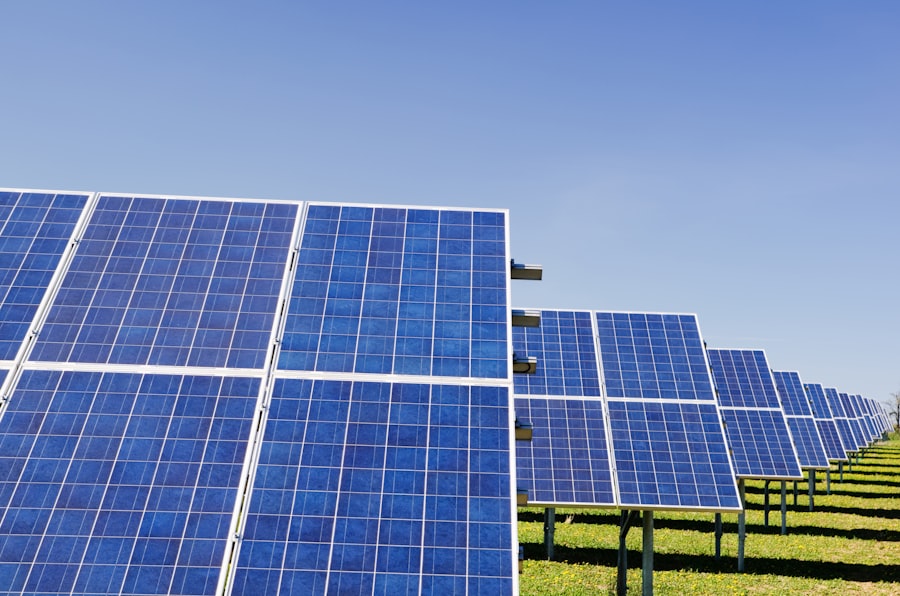In recent years, the urgency for sustainable solutions has become increasingly apparent. As we face the challenges of climate change, resource depletion, and environmental degradation, the need for innovative technologies that promote sustainability has never been more critical. Sustainable tech innovations encompass a wide range of advancements designed to reduce our ecological footprint while enhancing our quality of life.
By harnessing the power of nature and leveraging cutting-edge technology, we can create a more sustainable future for ourselves and generations to come. As we delve into the world of sustainable tech innovations, we will explore various energy sources and technologies that are reshaping our approach to energy consumption and production. From solar and wind power to energy-efficient buildings and electric vehicles, these innovations not only help mitigate climate change but also foster economic growth and job creation.
By embracing these technologies, we can collectively work towards a greener planet, ensuring that our natural resources are preserved for future generations.
Key Takeaways
- Sustainable tech innovations offer solutions for reducing environmental impact and promoting a greener future.
- Solar power harnesses the sun’s energy through photovoltaic cells, providing a renewable and clean energy source.
- Wind power utilizes the power of the wind to generate electricity, offering a sustainable alternative to fossil fuels.
- Hydroelectric power generates electricity from water, making use of a natural and renewable resource.
- Geothermal energy taps into the earth’s heat to produce power, offering a reliable and sustainable energy source.
Solar Power: Harnessing the Sun’s Energy
Creating a Sustainable Energy Source
As we invest in solar infrastructure, we are not only decreasing greenhouse gas emissions but also creating a sustainable energy source that can power homes, businesses, and even entire cities. Moreover, the integration of solar power into our daily lives has led to a shift in how we perceive energy consumption.
Democratizing Energy Production
With the rise of solar panels on rooftops and solar farms in open fields, we are witnessing a democratization of energy production. This shift empowers individuals and communities to take control of their energy needs while contributing to a cleaner environment.
Towards a Sustainable Future
As we continue to innovate in solar technology, we can expect even greater efficiency and affordability, making it an integral part of our sustainable future.
Wind Power: Utilizing the Power of the Wind
Wind power is another cornerstone of sustainable energy solutions that harnesses the natural force of wind to generate electricity. Wind turbines, strategically placed in areas with high wind potential, convert kinetic energy into electrical energy. This renewable resource has gained significant traction over the past few decades, becoming one of the fastest-growing sources of electricity worldwide.
As we embrace wind power, we are not only reducing our carbon footprint but also diversifying our energy portfolio. The benefits of wind power extend beyond just environmental impact; it also offers economic advantages. The wind energy sector has created thousands of jobs in manufacturing, installation, and maintenance.
As we invest in wind farms and related infrastructure, we are fostering local economies while promoting sustainable practices. Furthermore, advancements in turbine technology have led to increased efficiency and reduced costs, making wind power an increasingly viable option for meeting our energy needs.
Hydroelectric Power: Generating Electricity from Water
Hydroelectric power has long been recognized as a reliable source of renewable energy. By harnessing the flow of water through dams or run-of-the-river systems, we can generate electricity without emitting harmful pollutants. This form of energy production is not only efficient but also provides a consistent power supply, making it an essential component of our energy mix.
As we explore hydroelectric power, we uncover its potential to contribute significantly to our sustainable energy goals. However, while hydroelectric power offers numerous benefits, it is essential to consider its environmental impact as well. The construction of large dams can disrupt local ecosystems and displace communities.
Therefore, as we move forward with hydroelectric projects, it is crucial to prioritize sustainable practices that minimize ecological disruption. By investing in innovative technologies such as small-scale hydro systems and run-of-the-river projects, we can harness the power of water while preserving the delicate balance of our natural environments.
Geothermal Energy: Tapping into the Earth’s Heat
Geothermal energy represents a unique approach to sustainable power generation by utilizing the Earth’s internal heat. This renewable resource is derived from the natural heat stored beneath the Earth’s surface and can be harnessed for electricity generation or direct heating applications. As we tap into geothermal energy, we unlock a consistent and reliable source of power that is available year-round, regardless of weather conditions.
The potential for geothermal energy is vast, with many regions around the world possessing untapped resources. As we invest in geothermal technology and infrastructure, we can create a sustainable energy source that reduces our dependence on fossil fuels while providing stable jobs in local communities. Furthermore, advancements in drilling techniques and enhanced geothermal systems are paving the way for broader adoption of this clean energy source, making it an essential player in our quest for sustainability.
Energy-Efficient Buildings: Designing for Sustainability
As we strive for sustainability, the design and construction of energy-efficient buildings play a pivotal role in reducing overall energy consumption.
These buildings not only consume less energy but also provide healthier living spaces for occupants.
Moreover, the concept of green building extends beyond mere energy efficiency; it encompasses sustainable practices throughout the entire lifecycle of a structure. From sourcing eco-friendly materials to implementing water conservation measures, every aspect contributes to a more sustainable future. As we embrace these principles in architecture and urban planning, we can create communities that prioritize environmental stewardship while enhancing the quality of life for residents.
Electric Vehicles: Reducing Carbon Emissions
The transportation sector is one of the largest contributors to greenhouse gas emissions globally. However, with the rise of electric vehicles (EVs), we have an opportunity to revolutionize how we think about transportation. By replacing traditional gasoline-powered cars with EVs powered by renewable energy sources, we can drastically reduce our carbon emissions and improve air quality in urban areas.
As we witness advancements in battery technology and charging infrastructure, electric vehicles are becoming more accessible and practical for everyday use. The growing popularity of EVs is not just about reducing emissions; it also represents a shift towards sustainable mobility solutions that prioritize efficiency and convenience. As we continue to innovate in this space, we can expect further improvements in range, charging speed, and affordability, making electric vehicles an integral part of our sustainable future.
Sustainable Materials: Creating Eco-Friendly Products
The materials we choose to use in our products have a significant impact on the environment. Sustainable materials are those that are sourced responsibly and designed to minimize waste throughout their lifecycle. By prioritizing eco-friendly materials such as recycled plastics, bamboo, or organic cotton, we can reduce our reliance on non-renewable resources while promoting a circular economy.
As consumers become more aware of their purchasing decisions’ environmental impact, there is a growing demand for products made from sustainable materials. This shift encourages manufacturers to innovate and adopt greener practices in their production processes. By investing in research and development for sustainable materials, we can create products that not only meet consumer needs but also contribute positively to the planet.
Smart Grid Technology: Improving Energy Distribution
The advent of smart grid technology represents a significant leap forward in how we manage and distribute electricity. By integrating digital communication technologies into our electrical grid systems, we can enhance efficiency and reliability while reducing waste. Smart grids enable real-time monitoring and management of energy consumption, allowing us to optimize resource allocation based on demand.
As we embrace smart grid technology, we also empower consumers to take control of their energy usage through smart meters and home automation systems. This increased transparency fosters a culture of conservation and encourages individuals to make informed decisions about their energy consumption habits. Furthermore, smart grids facilitate the integration of renewable energy sources into the existing infrastructure, paving the way for a more resilient and sustainable energy future.
Waste-to-Energy Solutions: Converting Waste into Power
Waste-to-energy solutions offer an innovative approach to managing waste while generating electricity simultaneously. By converting municipal solid waste into usable energy through processes such as incineration or anaerobic digestion, we can reduce landfill waste while producing clean power. This dual benefit addresses two pressing issues: waste management and energy production.
As we explore waste-to-energy technologies further, it becomes clear that they can play a vital role in achieving sustainability goals. By diverting waste from landfills and utilizing it as a resource for energy generation, we can create a circular economy that minimizes waste while maximizing resource efficiency. Additionally, advancements in waste-to-energy technologies continue to improve efficiency and reduce emissions associated with traditional waste disposal methods.
The Future of Sustainable Tech Innovations
Looking ahead, the future of sustainable tech innovations appears promising as society increasingly prioritizes environmental responsibility. The convergence of various technologies—such as artificial intelligence, blockchain, and advanced materials—will likely lead to even more groundbreaking solutions that address sustainability challenges across multiple sectors. As we continue to invest in research and development, collaboration between governments, businesses, and communities will be essential in driving these innovations forward.
Moreover, public awareness and engagement will play a crucial role in shaping the future landscape of sustainable technologies. As individuals become more informed about their choices’ environmental impact, they will demand greater accountability from companies and policymakers alike. By fostering a culture of sustainability at all levels—individuals, organizations, and governments—we can collectively work towards a future where sustainable tech innovations become the norm rather than the exception.
In conclusion, sustainable tech innovations hold immense potential for transforming our world into a greener place. By embracing renewable energy sources like solar, wind, hydroelectricity, geothermal energy; designing energy-efficient buildings; promoting electric vehicles; utilizing sustainable materials; implementing smart grid technology; and exploring waste-to-energy solutions—we can pave the way for a more sustainable future that benefits both people and the planet alike. Together, let us commit to fostering these innovations as we strive towards a brighter tomorrow.
One related article to Sustainable Tech Innovations – Focus on eco-friendly technologies and green energy solutions is “How to Connect Canon Printer to Laptop” which discusses the importance of using energy-efficient printers to reduce carbon footprint. This article provides step-by-step instructions on how to set up a Canon printer with a laptop, emphasizing the need for sustainable practices in everyday technology use. To learn more about connecting your printer to a laptop, you can check out the article here.
FAQs
What are sustainable tech innovations?
Sustainable tech innovations refer to the development and implementation of technologies that have a minimal impact on the environment and promote the efficient use of resources. These innovations aim to address environmental challenges and contribute to a more sustainable future.
What are some examples of eco-friendly technologies?
Examples of eco-friendly technologies include solar panels, wind turbines, electric vehicles, energy-efficient appliances, green building materials, and water-saving devices. These technologies are designed to reduce carbon emissions, minimize waste, and conserve natural resources.
How do sustainable tech innovations contribute to green energy solutions?
Sustainable tech innovations contribute to green energy solutions by harnessing renewable energy sources such as solar, wind, and hydro power. These technologies help reduce reliance on fossil fuels, lower greenhouse gas emissions, and promote a more sustainable and resilient energy system.
What are the benefits of sustainable tech innovations?
The benefits of sustainable tech innovations include reduced environmental impact, lower energy costs, improved resource efficiency, and enhanced resilience to climate change. These innovations also create opportunities for economic growth, job creation, and technological advancement.
How can sustainable tech innovations be implemented on a large scale?
Sustainable tech innovations can be implemented on a large scale through supportive policies, investment incentives, public-private partnerships, and technological advancements. Collaboration between governments, businesses, and research institutions is essential for scaling up sustainable technologies and driving widespread adoption.
Get more stuff like this
Subscribe to our mailing list and get interesting stuff and updates to your email inbox.
Thank you for subscribing.
Something went wrong.




